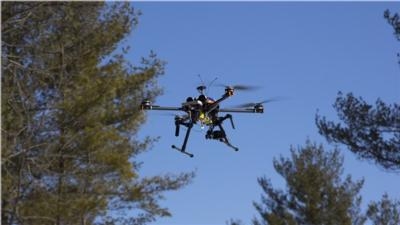Agency Has Resources To Help You Through That Process, Others Under New Part 107
The FAA new small drone rule that went into effect Monday – formally known as Part 107 – allows for some expanded operations based on technology mitigations if you can make the safety case for a waiver of some provisions. Operators can apply for waivers to operate at night, beyond line of sight, above 400 feet and other specific types of operation.

Here’s what the FAA says you need to know about the waiver process.
Under Part 107, you may request a waiver of certain provisions starting August 29 if your operations don’t quite fit under the rule’s provisions. As of Monday, August 29, the FAA has an online portal you can use to request waivers of applicable Part 107 regulations.
It’s important to understand the FAA won’t grant waivers automatically, and processing your waiver request may take time. The exact length of time will depend on the volume of requests that are received and the complexity of your waiver application. You should submit your waiver requests to the FAA as early as possible – at least 90 days before you plan to fly is recommended.
If you currently have a Section 333 exemption grant, and the FAA previously said you could operate under Part 107 with a waiver, you should have received a letter by August 29 notifying you that the agency has granted you a waiver or that additional information is needed for you to make your safety case.
Airspace Authorization: You can fly your drone in Class G (uncontrolled) airspace without air traffic control authorization, but operations in any other airspace need air traffic approval. You must request access to controlled airspace via the electronic portal, not from individual air traffic facilities.
You may submit your requests starting Mpnday, but air traffic facilities will receive approved authorizations according to the following tentative schedule:
- Class D & E Surface Area October 3, 2016
- Class C October 31, 2016
- Class B December 5, 2016
The FAA says it will try to approve requests as soon as possible, but the actual time will vary depending on the complexity of an individual request and the volume of applications we receive. You should submit a request at least 90 days before you intend to fly in controlled airspace.

Aeronautical Knowledge Test: Testing centers nationwide can now administer the Aeronautical Knowledge Test required under Part 107. After you pass the test, you must complete anFAA Airman Certificate and/or Rating Application to receive your remote pilot certificate.
It may take up to 48 hours for the website to record you passed the test. We expect to validate applications within 10 days. You will then receive instructions for printing a temporary airman certificate, which is good for 120 days. We will mail you a permanent Remote Pilot Certificate within 120 days.
The new regulations don’t apply to model aircraft operations that meet all the criteria specified in Section 336 of Public Law 112-95 (which is now codified in part 101), including the stipulation they be operated only for hobby or recreational purposes.
(Source: FAA news release. Images from file)
 Airborne 04.16.24: RV Update, Affordable Flying Expo, Diamond Lil
Airborne 04.16.24: RV Update, Affordable Flying Expo, Diamond Lil ANN's Daily Aero-Term (04.20.24): Light Gun
ANN's Daily Aero-Term (04.20.24): Light Gun Aero-News: Quote of the Day (04.20.24)
Aero-News: Quote of the Day (04.20.24) Aero-News: Quote of the Day (04.21.24)
Aero-News: Quote of the Day (04.21.24) ANN's Daily Aero-Term (04.21.24): Aircraft Conflict
ANN's Daily Aero-Term (04.21.24): Aircraft Conflict




